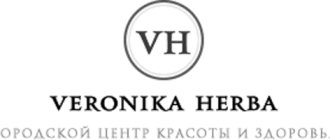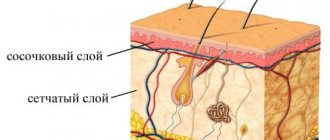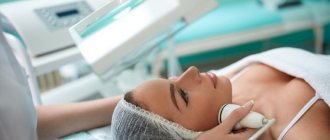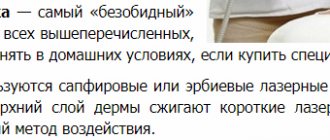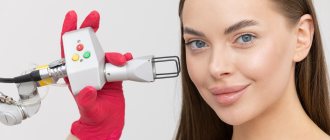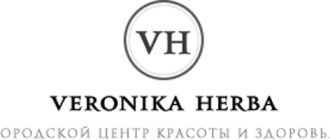From this article you will learn:
- What types of scars are there?
- What is laser scar resurfacing used for?
- What effect does laser resurfacing help achieve?
- Who is contraindicated for laser resurfacing?
- How to prepare for the procedure
- How does the procedure work?
- How long does the recovery process take after laser resurfacing?
Many people are concerned about the problem of scars left from acne, injury or surgery. Most girls know that it is almost impossible to remove this cosmetic defect on your own. Only a professional can offer an effective solution to the problem. For example, today laser scar resurfacing is considered one of the most advanced and effective techniques. The laser quickly eliminates scars, eliminating their reappearance, and does not cause any complications or skin problems. There are practically no contraindications to the procedure, so it is accessible to everyone.
What you need to know about scars
The appearance of scars causes pain on the skin, making it difficult to move the facial muscles. Soreness and unaesthetic appearance cause anxiety and stress.
Even small scars on the face cause a lot of negative emotions. Specialists of modern cosmetology and medicine are concerned with finding effective methods for the prevention, correction and treatment of this problem.
A mechanical wound heals within a year. This is a complex recovery process that ends with the appearance of a scar. Changes in tissues continue after healing, but they all occur slowly and imperceptibly to the eye.
Before you decide whether you will correct your scars with laser resurfacing or some other method, you need to determine the nature of the defect. There are physiological and pathological scarring. In the first case, scars form after injuries. They are pale, almost invisible. Pathological scars are usually large and bright in color.
Treatment should be selected based on the individual characteristics of the damage: the size of the scar, the duration of its existence on the skin, and the nosological form. It is impossible to completely remove scars that have already formed. Correction can significantly reduce damage and smooth the skin. Usually this process is very long.
An advanced modern technique for correcting such defects is laser scar resurfacing.
Let's try to figure out what scars are and why they occur.
By their nature, these are dense formations in the connective tissue of the skin. This defect appears during the healing process of the injuries received. In areas of scar formation, the tissue contains collagen, which is why the scars acquire a special shade. In these areas, the sweat glands and hair follicles will no longer be able to recover. Scars do not change color from exposure to ultraviolet radiation.
Read material on the topic: Atrophic scars on the face - causes of formation and main methods of treatment
Types and stages of scars
Types of scar damage:
- Atrophic. Formed as a result of minor skin lesions (after acne). They are slightly retracted into the skin and have a light whitish tint.
- Normotrophic. Appear as a result of minor injuries and damage to the skin. Such scars do not have a bright shade, they are almost invisible to the eye.
- Hypertrophic. This type is typical for more serious skin injuries. The scar areas are compacted and rise above the surface of the skin. This problem can affect the arms and neck area.
- Keloids. At the site of these scars, connective tissue grows around the scar. These are dense, lumpy formations that are distinguished by a bright shade (pink or bluish). This type of skin defect manifests itself not only externally. It causes itching and pain. Laser resurfacing of a keloid scar will be more complex.
Knowing the type of scars on your skin will help you choose the appropriate treatment method.
Scars form in areas of former skin damage. This could be inflammation, injury, or cuts. During the healing process, connective tissue rich in collagen is formed.
Because of this, scars:
- smoother than the rest of the skin;
- have fewer functional properties;
- do not change shade when tanning.
In this case, hair follicles and sweat glands are not restored. Scars vary in color and appearance.
Modern medicine does not answer the question of why keloid scars appear and why pain occurs. The formation of hypertrophic scars is explained by the skin's overly sensitive reaction to injury. Atrophic and normotrophic scars are formed as a result of a natural reaction to minor damage.
Read material on the topic: Laser removal of stretch marks in a beauty salon: pros and cons of the procedure
When is laser scar resurfacing necessary?
Scars can cause a lot of discomfort. Laser resurfacing is used for any type of damage. Indications for going to a cosmetologist are light or sunken, dense and raised scars on the skin.
Laser resurfacing is different in that it can eliminate defects even in the most delicate areas (for example, on the eyelids). Most similar techniques in cosmetology do not have this feature.
The laser also successfully deals with large, rough scars that have been on the skin for a long time.
Laser resurfacing of facial scars is considered the only method that significantly reduces or completely eliminates the defect. During the procedure, a professional removes the very top layer of skin where the scar is located. Thanks to the high temperature, the natural production of collagen and elastin begins, and as a result we get a healthy area of skin of a normal shade. The sooner you visit a cosmetologist, the more effective the recovery will be.
Modern clinics use only modern equipment. These are devices manufactured in America and Europe. Erbium and carbon dioxide lasers are commonly used. The first option works well for superficial damage, the second - if laser resurfacing of keloid scars is performed.
Recommended articles on the topic:
- Painless lip modeling: techniques and recommendations
- Beauty injections: types, preparations, reviews
- Eyelash restoration at home and in a beauty salon
The essence of the procedure
In the first stages, grinding reduces the depth of scar formations. In the future, the scar can be removed almost completely.
Laser resurfacing of facial scars occurs according to the following principle. First, the laser removes the stratum corneum that makes up the scar itself. In the freed area, cells begin to divide intensively, and natural production of collagen and elastin occurs. Thanks to these substances, a new layer of healthy, smooth skin is formed in the scar area. The device has a built-in cooling system, which prevents overheating of the epidermis from laser beams. We are also seeing a significant reduction in recovery time after the procedure.
After laser treatment, thin channels will remain in the skin tissue, where new cells will begin to form over time. Dead skin particles will evaporate through small holes that are formed in the upper skin due to the action of the device. The rest of the skin surface will not be affected by the laser. Its appearance and internal structure will remain the same.
On the face, laser resurfacing even removes scars from sensitive areas such as the eyelids and lips.
Professionals advise visiting a cosmetologist as soon as possible after the damage has healed. Those scars that have been on the skin for less than six months are removed quickly and almost completely. Usually one or two procedures are enough for this. Deep damage requires longer correction.
Using the laser resurfacing method, you will get the following effect:
- smoothing the skin surface;
- changing the color of the scar to a normal healthy shade;
- gradual and complete removal of the scar.
In the photo: a device used for laser resurfacing of scars.
The optimal period for visiting a cosmetologist for a course of procedures is autumn or winter (cold season). It is important that during the recovery stage the skin is protected from sunlight. Immediately after the session, she is irritated by the laser, and ultraviolet light can provoke the formation of dark spots near the scars (due to increased melatonin production).
Laser facial resurfacing should only occur after prior consultation with a cosmetologist. A professional will take into account not only the size and time that the scar is on the skin, but also the characteristics of your body.
Read material on the topic: Removal of warts with laser: technology, consequences, recommendations
How often can you do it
Sanding is not done often. The optimal frequency between treatments is 1-2 months. During this time, the skin is completely restored and you can begin to prepare for the next procedure.
Doctors prescribe the number of sessions depending on the problem and condition of the client’s skin. You can get rid of fine wrinkles and acne in one go. Deep scars and scars disappear after 4-6 procedures.
It is necessary to give the skin a rest for at least a year after completing the course of treatment. Even if the clinic is holding promotions and has set a low cost for laser facial resurfacing.
Laser scar resurfacing: indications and contraindications
The laser works successfully on scars of varying complexity.
You can sand after:
- acne (post-acne);
- burns, including chemical ones;
- injuries;
- animal bites;
- surgical operations (including after caesarean section and plastic surgery).
Laser resurfacing can be done anywhere on the skin where scars have formed: on the forehead, on the back, on the chest. The procedure is performed in professional clinics by cosmetologists. Many people wonder how much a laser for scar resurfacing costs. It will not be possible to perform this procedure at home, since the required device is a massive and expensive device, and special skills are required to set it up.
Contraindications to laser resurfacing:
- vitiligo;
- keloid scars;
- diabetes;
- psoriasis;
- oncopathology;
- chronic diseases;
- scleroderma;
- epilepsy;
- hemophilia and other coagulation disorders;
- infectious diseases, including herpes.
Reviews about the procedure will tell you whether or not to do laser scar resurfacing. Please note that it should not be performed during exacerbations of chronic diseases, menstruation, pregnancy and breastfeeding.
Read material on the topic: Laser removal of papillomas - painless disposal of tumors
Preparation for laser scar resurfacing
Preparation before the procedure is carried out to ensure that dark spots do not form on the skin after laser exposure.
14–20 days before the session you need to exclude:
- solarium;
- taking medications that increase skin sensitivity to ultraviolet radiation: ointments such as Protopic, Psoralen, drugs Doxycycline, Griseofulvin, Etacridine, Phenothiazine;
- tanning in the sun;
- taking anti-acne medications with vitamin A (“Roaccutane”, “Acnecutane”).
During the described period and during recovery after laser resurfacing of scars, it is necessary to treat the scar areas with a protective agent before each exposure to the sun.
How to treat fresh scars?
To speed up healing and prevent the formation of rough scar tissue, conservative treatment of fresh scars and stretch marks should be carried out. This will allow you to get a neat, tight scar, sometimes almost invisible, which will significantly reduce the number of laser resurfacings. Excellent results are obtained by plasma therapy (plasmolifting), placentotherapy, mesotherapy with anti-inflammatory and defibrosing components in combination with methyl agents for the treatment of scar tissue.
The main stages of the laser scar resurfacing procedure
Stages of laser scar resurfacing:
- Treatment of the affected area with a medical antiseptic.
- Using anesthetics on the scar area.
- Wearing safety glasses.
- Grinding. At the same time, the client feels a slight tingling sensation. Modern cosmetology clinics use advanced fractional lasers Bison More-Xel and DANA medical S-CO2. The price for polishing scars with these devices is quite high, but the effect will pleasantly surprise you.
- Treating the scar area with a soothing gel.
- Applying an aseptic dressing to the scar site.
Read material on the topic: Laser facial skin rejuvenation: useful tips and recommendations
Photos before and after, results
The result is noticeable after 2-3 sessions. To achieve the desired effect, experts recommend taking a full course of laser resurfacing, during which the scars will resolve. Renewed and healthy skin appears at the site of defects.
Rehabilitation period after scar resurfacing
The photo above shows the skin before and after laser scar resurfacing.
The recovery period after the session lasts 5–7 days.
At this time, it is important to follow the rules recommended by cosmetologists:
- For three days, do not lubricate the scar area with creams and ointments. You can only use restorative compounds prescribed by a specialist.
- Do not scrub or peel the damaged area for three weeks.
- Do not comb the treated area or remove scabs.
- For a month after laser resurfacing of acne scars and other damage, it is necessary to treat the scar area with a protective cream before each exposure to the sun.
It is important to know how the skin will behave after the procedure. The first three days there is redness and swelling, after which there is peeling. However, these are not negative effects or a specialist mistake, but a natural reaction that should pass.
If the doctor performed resurfacing according to all the rules and used high-quality equipment, then the most serious side effect may be the formation of dark spots near the scar. This often happens if the patient has been in the sun for a long time after the procedure, neglecting the advice of the cosmetologist.
Next, we will look at reviews of the laser method, as well as photographs of scars before and after resurfacing.
Read material on the topic: Laser biorevitalization of the face without complications and side effects
Facial rehabilitation
Immediately after the procedure, the face begins to turn red and burn heavily. Serous fluid is released and brown spots appear. The treated area may become covered with dots - traces from the laser.
The redness lasts 2-3 weeks and goes away gradually. Its intensity depends on the depth of treatment, the type of laser, skin care during the recovery period and the individual characteristics of the body.
Swelling appears, which intensifies every day and persists for 4-5 days. All wrinkles and defects become noticeable. The skin peels and itches. It hurts to touch her. A crust appears within a week. It needs to be constantly moisturized to prevent the formation of scars.
Dissolve 1 tbsp in a glass of cool water. a spoonful of vinegar, soak sterile gauze in the solution and apply lotions 4-5 times a day. After each procedure, treat the skin with Chlorhexidine.
Compresses are applied until the crusts begin to come off on their own. You cannot rip them off by hand.
To relieve itching, apply ice wrapped in a towel or a cold heating pad to the skin. But don't hold it for long. After just 5-10 minutes, the skin cools down and looks better.
Apply Panthenol serums with a moisturizing and regenerating effect to dry and sensitive skin. For the first 7-10 days you should not wash your face under the tap. Spray thermal or boiled water on your face. Do not wipe the skin with a towel, but gently blot with a dry cloth.
It is recommended to sleep on your back and use a high pillow to avoid accidentally injuring your skin during sleep. For the first week, try not to go outside so as not to expose your face to ultraviolet radiation and other harmful factors.
Smoking is not recommended for at least 10 days after the procedure. It is necessary to completely eliminate alcohol for a month. It dilates blood vessels and increases swelling.
Where to sign up for laser scar resurfacing
Nowadays, you no longer have to spend a lot of time performing complex and unpleasant procedures at home. It is much easier to seek help from real professionals - the Veronika Herba beauty and health center, equipped with effective and modern equipment.
Why clients choose Veronika Herba Beauty and Health Center:
- This is a beauty center where you can take care of yourself at a reasonable cost, while your face and/or body will be treated not by an ordinary cosmetologist, but by one of the best dermatologists in Moscow. This is a completely different, higher level of service!
- You can receive qualified help at any time convenient for you. The beauty center is open from 9:00 to 21:00, seven days a week. The main thing is to agree with your doctor in advance on the date and time of your appointment.
Sign up for a consultation with a specialist by phone +7 (495) 085-15-13
, and you will see for yourself!
Price
The price of laser facial resurfacing depends on the rating of the clinic, equipment, doctor’s qualifications and city. The cost of the procedure in Yuzhnouralsk and Tula differs from the Moscow price list.
Resurfacing the eyelids costs from 5 thousand rubles, the neck - from 4 thousand rubles, the entire face - 2 times more expensive. Removing stretch marks on the hips will cost from 9 thousand rubles, on the buttocks and chest - 10 thousand rubles.
The cost of scar treatment depends on the area. Grinding 1 cm2 costs from 500 rubles. In Moscow, prices are at least twice as high.
Anesthesia and regenerative care after the procedure are additionally paid for.
